You’re damned if you see Salo and damned if you don’t.
In 2010 I was given a collector’s dvd edition legally, after decades of a worldwide ban. But first, let’s set the scene of censoring art.
When the police raided in April 2002, I was sitting on a hard chair illegally added to the aisle of the packed Sydney Chauvel Cinema screening of the highly controversial Baise Moi. The end credits rolled and I was still in the throes of the impact this film was having on me and how much it offended people – so much so, it had been banned in more than 20 countries and Australia was just about to join that list.
It’s a simple story – two women go on a murderous road trip that doesn’t end well. It doesn’t start well either. And things don’t go well in the middle. It was a sort of very raw Thelma & Louise on steroids. I was thrilled that I got to see it on the big screen before the raid by uniformed police. It was sad though to see people who’d bought tickets for the next session only to have the projector shut down as the official ban on the film in Australia became effective immediately.
Flash forward to 2009 – I gained a ‘Certificate Of Completion’ as a Trained Content Assessor from the Australian Government Classification Board. I now had a piece of paper confirming I knew my arse from my elbow in terms of screen representation and was able to assess content according to the rating system: G, PG, M, MA, R, RC plus all associated minor rating categories. So how would I assess Salo or The 120 Days Of Sodom? I’ll tell you later. First – what’s the big deal about Salo?
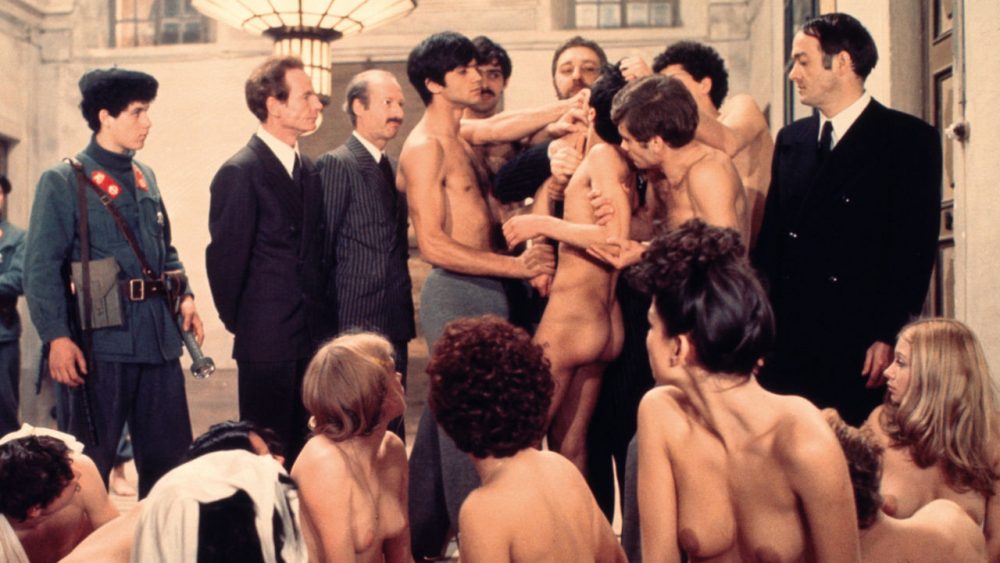
The Film
If there is any futility of the making of this film, it’s that its creator never saw it theatrically released – or the 30+ years of suppression of his final major cinematic work. The director and intellectual mind responsible for Salo – Pier Paolo Pasolini – was murdered/assassinated/executed before the film’s release. There’s much speculation as to who and why along with rumours of stolen film rushes and extortion bids. Was his death the result of making the movie? Hard to say. Though the film itself may hold more than one clue.
Salo was made in 1975, set in 1944 Fascist Italy and based on the Gothic novel 120 Days Of Sodom by the Marquis de Sade – born 1740 died 1814. In order to gain a snapshot of the truly dark side of our modern collective soul, Pasolini had written and directed a beautifully shot, highly stylized journey into the atrocity of humanity. It’s a bleak comedy where despite all the laughter nothing is funny. And behind all the ‘fun’ and games, there’s a truly ghastly irony.
Look at the US box office: $0. Yet the film gets a 70% Tomatometer rating which is pretty good. It also means people have seen it. And of those, some reactions to the film have been: weeping, retching, covering of faces, wishing they could unsee what they saw – along with exhilaration, stimulation, an awakening to the true modern human condition and the chilling recognition of our species’ descent into madness.
‘It really does make American Psycho look like Alice In Wonderland.’
Comment on youtube by SukhdevZomer
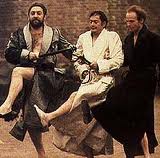
The Ban
Around the world Salo was banned, unbanned, re-banned and refused classification. It was never theatrically released in Australia and legally unavailable until 2010. Then on April 17 it was reported that a dvd release of Salo had been given approval by the Australian censorship authorities. Comments online include ‘bravo’, some cheering as well as outrage and anger. Some people warn everyone to avoid this film at all costs. One respondent went so far as to call for the punishment and execution of the classification and censorship authorities for allowing the dvd release of Salo. The irony here is palpable – the people protesting the violence in Salo are calling for violence against censorship authorities.
Wikipedia sums up the storyline like this: The film focuses on four wealthy, corrupted fascist libertines in Benito Mussolini’s Italy in 1944 who kidnap a total of eighteen teenage boys and girls and subject them to four months of extreme violence, sadism, sexual and mental torture before finally executing them one by one. The film is noted for exploring the themes of political corruption, abuse of power, sadism, perversion, sexuality, and fascism. Although it remains a controversial film to this day, it has been praised by various film historians and critics, and while not typically considered a horror film, Salò was named the 65th scariest film ever made by the Chicago Film Critics Association in 2006.
Only the #65? What are the other 64?
Aside from full frontal nudity, here’s what’s causing the ongoing controversy. It examines the nature of atrocity. Some of the violence carried out by the characters seems pointless – and that’s the point. But none of the violence in the film as a whole is pointless. It all works together to make valid points about decline and decay. It looks at the dichotomy of victim and perpetrator – that they can be two sides of the same coin. This is not a popular point of view because to accept its truth means to acknowledge there isn’t just right and wrong, black and white, victim and perp. With today’s political correctness, suggesting the victim shares in some blame when it comes to some crime, is counter to current popular ideology.
The world of Salo is chilling due to its similarity to the real world in terms of structure. Rules must be followed, punishment is harsh. Some of the rules seem ridiculous and contradictory – but this performs a more subversive function. When two opposing rules appear to cancel each other out, guaranteed punishment ensures a greater sublimation of the ego and subjection of the will. [For more info on how this works, get hold of Kogon’s Theory & Practice Of Hell – there’s a chapter devoted to the rules of a WW2 German-run concentration camp. An inmate’s work clogs had to be free of mud otherwise a beating would result. If work clogs were clean, the inmate was deemed not to be working hard enough and a beating would result.]
Contradictory rules persist in all levels of social governance across the world. For example – NSW road rules are now so convoluted and contradictory that no international traveler could drive one kilometre here without committing a traffic offense, copping a fine and possibly a criminal record. As a result of the 12 point system on driving licenses, a black market has sprung up – backpackers sign statutory declarations claiming to be driving the car at the time of the offense then cop the points with the actual Australian perpetrator paying the fine and the backpacker for their services.
Salo also provides a disturbing look at consumerism gone crazy. Back in the 70s, Pasolini himself named television as the main agent of decline – which was later perfectly echoed in the lyrics of The Disposable Heroes Of Hiphoprisy’s Television The Drug Of A Nation (1992):
Television, the drug of the Nation
Breeding ignorance and feeding radiation
T.V. is it the reflector or the director?
Does it imitate us or do we imitate it?
Because a child watches 1500 murders before he's twelve years old and we wonder how we've created
a Jason generation that learns to laugh rather than abhor the horror.
Pasolini regarded this decline as ‘development without progress’ and just as – if not more insidious as 1940s Fascism. So let’s get specific about what viewers ie voyeurs see when they watch Salo.
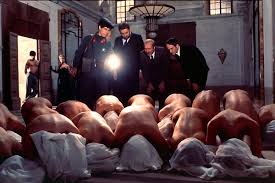
The Scenes
People are forced to eat food spiked with nails.
People are raped.
People are beaten.
People eat excrement – for the most part, not voluntarily.
Fetishist and ‘deviant’ sexuality is forced onto people who would be considered under age in some countries.
Degradation, rape, humiliation, torture, scat, mutilation, execution happen regularly with a mix of amusement and indifference.
Urinating, defecating, barfing, spitting, beating, farting, sneering and laughing are all part of the soundtrack. Like a Bruegel painting, it might look like a big fat party scene from a distance but up close, there are multiple individual acts of savagery. The inhumanity of humanity is so profoundly depicted, it’s hard not to despise oneself. It’s not genocide humans commit, it’s a slow suicide of the species. The film visualizes the human body as a commodity to be used and abused by the bourgeoisie and by the few ‘enforcers’ who are hand-picked from the victims after which they exist essentially powerless because the power they wield was granted by a higher power and could be taken away on a whim. The first time the world saw the industrialization of death was in the gruesomely efficient German concentration camps of WW2. If you look at the evolution of advertising and the rise of the ‘talent manager’ and it’s apparent we have now truly commercialized humanity. Let’s have a big round of applause for Neo-Capitalism.
When you see the final ten minutes of Salo which is from the power players point of view through binoculars while sitting in an armchair, it’s easy to see how Pasolini predicted the rise of reality TV – that from a safe distance, we would watch and enjoy the torture and humiliation of human beings as entertainment then end their suffering one by one with elimination. Cases in point – Australian Idol auditions, Big Brother as well as the many Japanese ‘game’ shows. Even The Simpsons devoted an episode to satirizing the abject cruelty of those little gems of Japanese pop culture.
So close was Pasolini’s prediction of reality TV that in Salo, there’s a scene where a contest is set up to ascertain ‘the most beautiful arse’.
‘The audience there [watching] is the mass of corrupted and deformed TV viewers, the passive consumers of indoctrination against which they cannot, or do not want to, rebel.’
Roberto Chiesi – Curator of the Centro Studi – Archivio Pier Paolo Pasolini
My Defense Of Salo:
There’s nothing in this film we all haven’t experienced in varying degrees. For example – eating shit. Take a look at fast food production and consumption and you’ll find pain, torture, depravity, mutilation and death along with an economic situation that forces some parts of society to eat more ‘cheaply’ than others. Pasolini’s shit-eaters are metaphors of people who consume fast food. Some are forced, some do it willingly. The function of metaphor is to provide deeper understanding and meaning of a concept by using another set of images to illustrate it. Metaphor can also elevate an idea to art. Art is also an effective way to bring difficult concepts into the public arena so they can be discussed and debated instead of silently swept under the carpet. The court jester performed this function too and has since morphed into the modern day stand up comedian and pop culture commentator.
Watching this film, we become – or realize we already are – the horrible people Pasolini depicts. The extreme horror at the end makes what has preceded it, more palatable. That scares people when they see it. It scares them about themselves and most of those people don’t realize that that process is going on inside them – hence they reject the film outright on superficial grounds such as ‘people eating shit on screen is distasteful and degrading – I don’t want to see that. What kind of a person would want to watch that?’
Well, lots of people eat state-sanctioned shit every day and look forward to it. (Remember Soylent Green 1971?) They desire terrible food from vile holocaust-like processes with horrific conditions for the animals. The food lacks significant nutritional value, taste has to be enhanced and it’s cheap to buy at the retail end of the food chain. Then people go to these fast food franchises and sit together in the same room devouring this shit and see other people do exactly the same thing. This is Pasolini’s point – and one of many. If you have the guts to eat at McDonalds, you can tolerate seeing humans eating shit in Salo. Pasolini’s metaphor of shit-eating illustrates unfussy, unaware, unconscious, indifferent addictive consumerism. And of course in the movie, the shit wasn’t real. The actors scoffed chocolate on the set. Now let’s take a look at the supreme subjection of underlings to those in positions of power over them.
Salo uses images of sado-masochism in an overall metaphor to reveal the true relationship between a government and the people. It’s understood that we subjugate ourselves to the power of the state but it goes too far. For example – when parking fines go up are we, the people, consulted? No. There is no referendum. Why not? We accept this unauthorized extortion. We moan about the pain of it. But we still go along with it and let it happen. We are not weak but we act weak. As a mob and a single entity, we have the strength to vote the power players in – then we turn around and subject ourselves to their will and whim. We become willing subjects and willing victims in political sado-masochism. Pasolini used metaphors taken from de Sade’s work to show us the nature of power in the modern world and how the subjects are just as much a part of the construct as the players. Sex happens in the film without love, without affection. Salo holds up a mirror to modern morality revealing true freedom in total anarchy. It comes at a terrible price of course – for some more than others. Now that’s a tough concept for anyone to grasp – but incredibly liberating if you can get your head around it.
‘Pasolini’s film is not about sex but the death of sex.’
Naomi Greene – Professor of French and Film Studies at the University of California
Salo is not meant to entertain us. Entertainment is a privilege to be enjoyed only by the power mongers in the film. Pasolini invites us not to just look at how horrible these people and their actions are – but to see ourselves in a concentrated metaphor of sado-masochism pointing to the reality of power and our roles within it, supporting it, perpetuating it. It’s not a pretty picture but it is a necessary one.
DVD review – The Extras
What truly makes this dvd a worthwhile buy are the interviews with cast members, crew and Pasolini himself. There’s also B roll and behind the scenes footage of the shoot all of which reveal the gruelling nature of the content being shot. The close-ups in the final torture, mutilation and execution sequence were filmed over several days in a hellishly confined set which caused a steady decline in the humour of the crew. It would have been not just hard but impossible to remain unaffected by participating in creating a metaphor of such abject cruelty, no matter how artistic the final product may be.
In Summary
What can I say? I’m ashamed of my lack of shame. I’m appalled at how the very person Pasolini depicts is… me.
This film will make you confront who you really are and what your role is in our sado-masochistic world. Who do we become when we eagerly watch gladiator battles, violent sports and reality tv? We are all Pasolini’s people. Even the way humans play, watch and enjoy sport is reflected in the sado-masochism of Salo. Mass state-condoned consumerism allows us to create a myriad of distractions. But we need to stop and ask – what are we distracting ourselves from? And what is the cost? Imagine you smoke cigarettes and it causes a gangrenous leg. So you keep buying cheap knock-off designer jeans to cover the rancid infection and spend whole days at shopping malls buying cheap perfume to cover the smell of the your own rot while laughing with your socially networked friends about how hard you work to make the money you take to the mall on weekends to spend on stuff that you don’t need because being an active consumer is the way to relax outside of work – and never realizing that the sado-masochistic power relationship as depicted in Salo is actually your life being played out in a metaphor of indifferent depravity.
Touché. Neo-Capitalism scores another goal. Hooray. And Pasolini was dead before Salo’s theatrical release. Does that make the film futile?
No.
Does his assassination / murder / execution make him a martyr?
Yes.
We kill all our ‘Christs’, all our prophets. Martin Luther King, John Lennon, Jesus. Regardless of what you think of Salo without seeing it or after you see it, the film has a right to exist and be seen by choice. So how do I assess the content of Salo aside from it being essential viewing for intelligent people – or anyone who wants to have any real handle on the dark side of the modern consumerist soul? R for Restricted. It’s full of adult concepts that most adults would struggle to understand let alone interpret or explain to a minor. It must be an adult decision to view the film or to not view the film. It’s not a decision to be taken lightly nor should viewings be inflicted upon people – especially the young and the weak. If you don’t see Salo because you are scared of it – then yes, I will think less of you – in much the same way a Pasolini perpetrator would.
See Salo. See yourself. You’re damned if you do and damned if you don’t.
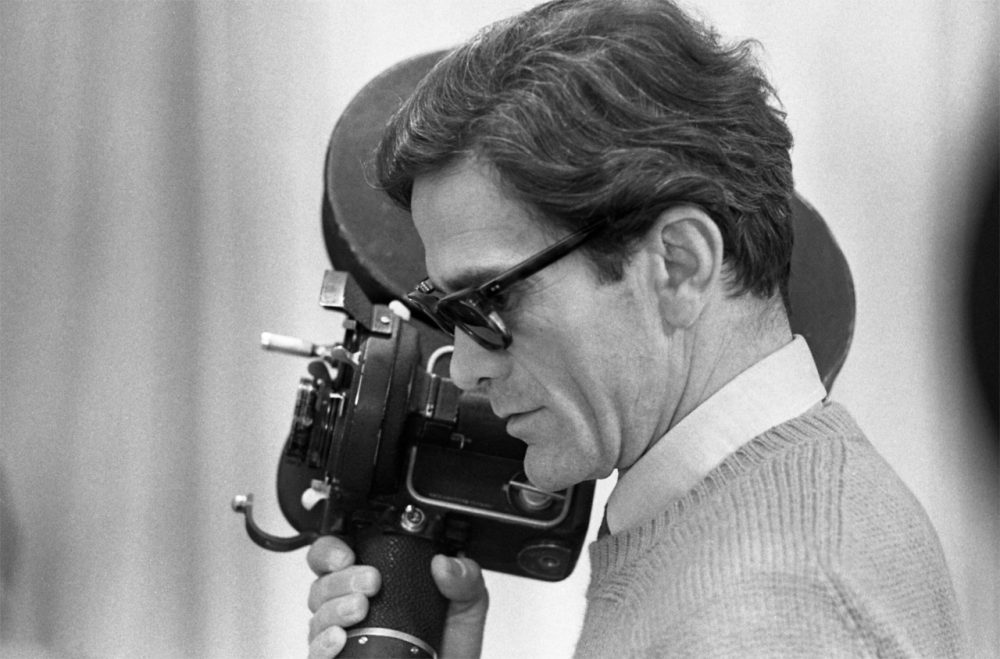
Pier Paolo Pasolini
Born March 5, 1922(1922-03-05) Bologna, Italy
Died November 2, 1975 (aged 53) Ostia, Rome, Italy
Death
Pasolini was brutally murdered by being run over several times with his own car, dying on 2 November 1975 on the beach at Ostia, near Rome. He was buried in Casarsa, in his beloved Friuli. Giuseppe Pelosi, a seventeen-year-old hustler, was arrested and confessed to murdering Pasolini. Thirty years later, on 7 May 2005, he retracted his confession, which he said was made under the threat of violence to his family. He claimed that three people “with a southern accent” had committed the murder, insulting Pasolini as a “dirty communist”. Following Pelosi’s retraction, the investigation into Pasolini’s death was reopened. The murder is still unsolved.
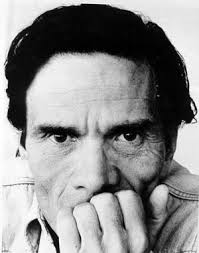
(I wrote this essay on May 11, 2010 then updated it December 21, 2013 with photos and vision.)
